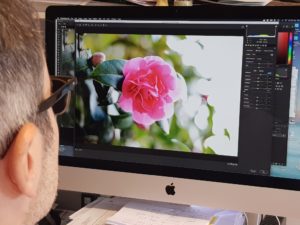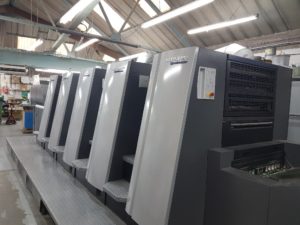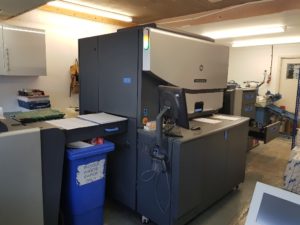If you’re new to getting your own greeting cards printed, becoming a publisher can seem like a daunting task. Whether you’re using your own photography, existing artwork or illustrations there are many questions. Can it be colour matched? Will I lose quality? Where do I get artwork converted?
Simon Rosson, our greeting card expert, is on hand to answer a few questions.
How Do I Start With Greeting Card Printing?

Getting your greeting cards printed starts with the conversion of your work into high quality print files. Get this part wrong and it will be very difficult to print your work accurately. So what’s the first step?
Simon advises on how to avoid the pit-falls.
“For photographers its important to work with a printing company who understands the process of a photographers work from lightbox to print. Talk to the printers pre-press team and make sure that colour matching capabilities and know-how are available.
“For artists converting artwork into print poses different problems, but its still just as important to make sure that the right equipment is being used. Most commercial printers won’t want to take on this responsibility, and this will whittle your choice down. Again, discuss with pre-press team members and see if they can ensure colour matching, colour and light correction if required.”
Choosing the Right Printer to Print Greeting Cards
With so many printers around, it’s a difficult decision to choose the right printing company. Greeting card printing could be done by most, but Simon explains why its important to select carefully.

“Most smaller printers and print shops will have toner based copy machines which may not do your images or artwork any justice. To ensure quality and colour matching, its always best to use a printer with litho or a production quality digital press such as the HP Indigo.
“Your printer should let you know which kind of press will suit your print run. For long print runs litho is the way to go. It will work out cheaper and the quality is superb. Litho machines have a plate making cost, which might make a smaller run of cards more expensive than that of a digital press.
Digital for shorter runs…

“For smaller runs, a good digital press is required. The HP Indigo digital press can produce shorter runs in superb quality, keep colour consistently and can even print white ink for printing onto coloured card. They’re perfect for those shorter runs and it will be more cost effective to print this way.”
Smaller runs also mean a smaller outlay so you won’t need to be troubled with masses of stock. This way you can try out your range and find out which designs move quicker, giving you a better idea of future quantities.
The HP Indigo here at Johnsons is also capable of printing a white ink which is perfect for producing designs on coloured boards. Especially useful for artists and illustrators. See our article on white ink printing.
Providing Optional Finishing & Packaging
If you’re looking to add extra style to your cards, adding a foil or embossing can enhance your card designs. So how does it work?
You can add foil to all or part of your design and it can be incorporated into design quite easily. This might be to highlight certain areas or to add a metallic sheen to your greeting cards. If you’re used to designing plates, the foil is designed in a very similar way. If you need help on this, give Simon a call to discuss in a little more detail.
Learn more about foil-blocking
Embossing is also a great way to add a difference to your greeting cards. Selecting areas like text or small areas of the design can be quite effective. Once again we can help you with design, our pre-press team can work under your instruction and will help you get the effects you are looking for, or offer suggestions.
Learn more about embossing and de-embossing
It’s also worth considering the presentation of your cards. The majority of the cards we manufacture here at Johnsons, are cello-wrapped, protecting the cards and envelopes. However, you may want to present your cards in a different way and it would be worth spending time planning how you will present your cards ready for re-sale. Again, use our expert team if you would like to discuss this in more detail 01270 625207 or use the contact form below.